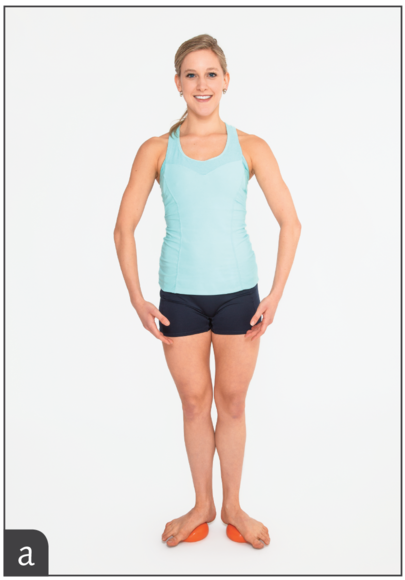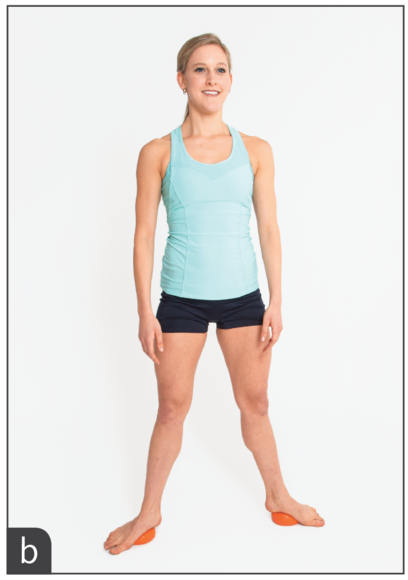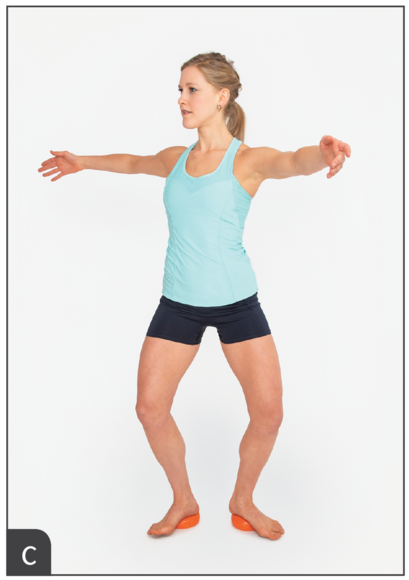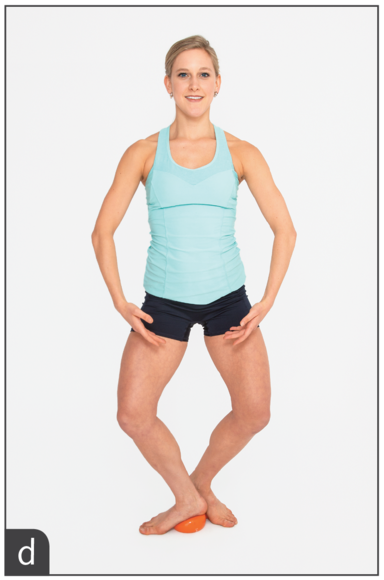An exercise to enhance balance
This is an excerpt from Conditioning for Dance 2nd Edition With Web Resource by Eric Franklin.
Balancing in First, Second, and Third Positions
Now you graduate to balancing on balls in some basic dance foot positions. This exercise will greatly enhance your balance and also your plié. In addition, it is a great exercise for improving turnout. It will help you feel more balanced and flexible in your legs. At first it will seem rather challenging, but once you get more practiced, you will want to add it to your daily routine.
- Place the balls next to each other.
- Stand on the balls in first position (figure a).
- Perform a few demi-pliés.
- Rotate your feet to a parallel position, and perform a few more demi-pliés.
- Get off the balls, and notice how it feels to perform a plié in first and second position as well as standing in parallel. Notice whether you feel more stable and aligned, and whether the plié will effortlessly go deeper.
- Next, practice balancing on balls in second position (see figure b). This position is more challenging and requires more strength in your legs. The balls should not be too widely placed, lest they roll out to the sides.
- Perform several pliés until you tire. These pliés can be done in a centered position or also with torso rotations (figure c).
- Finally, stand on the balls in third position (figure d). For this part, you need to position the balls one in front of the other.




More Excerpts From Conditioning for Dance 2nd Edition With Web Resource
SHOP

Get the latest insights with regular newsletters, plus periodic product information and special insider offers.
JOIN NOW


